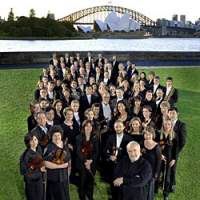This October, Tokyo and Osaka will host Asia Orchestra Week 2006, an annual festival that celebrates classical music from a distinctly Asian -- and contemporary -- perspective. Over the last four years, AOW has drawn 30,000 people to watch more than 2,000 musicians from 13 Asia-Pacific countries. Programs presented by these orchestras, which this year include Sydney Orchestra and the Korean Symphony Orchestra, combine the traditional classical repertoire with innovative contemporary compositions that often reflect their own national folk music. Each concert is headed by a promising young soloist, who harmonizes this blend of conflict and contrast.
One such concert is scheduled from China's Heilongjiang Symphony Orchestra of Harbin (Tokyo, Oct. 4; Osaka, Oct. 6). The highlights of this program are many, and include Sibelius' beautiful Violin Concerto played by 20-year-old soloist Yang Xiaoyu, winner of the Tchaikovsky International Competition for Young Musicians in 2002, followed by Shostakovich's Fifth Symphony, whose movements the Russian composer has said trace "the making of a man."
The real intrigue in this program, however, comes in the opening piece, Symphonic Prelude for Orchestra No. 1 "New Time," by Chinese composer Wang Ning, which explores and juxtaposes old Chinese folk music with the sounds of mobile phones and computers that epitomize modern Chinese society.
As the host, for this occasion Japan brings together musicians from Tokyo-based orchestras to form the Performing Arts Festival Orchestra (Tokyo, Oct. 5). Toru Takemitsu's "Requiem for Strings" is the concert's opener. A piece for clarinet and orchestra, and a concerto for trombone and orchestra, are also presented by contemporary Japanese composers. The concert will finish with a symphonic blast of Brahms.

















With your current subscription plan you can comment on stories. However, before writing your first comment, please create a display name in the Profile section of your subscriber account page.